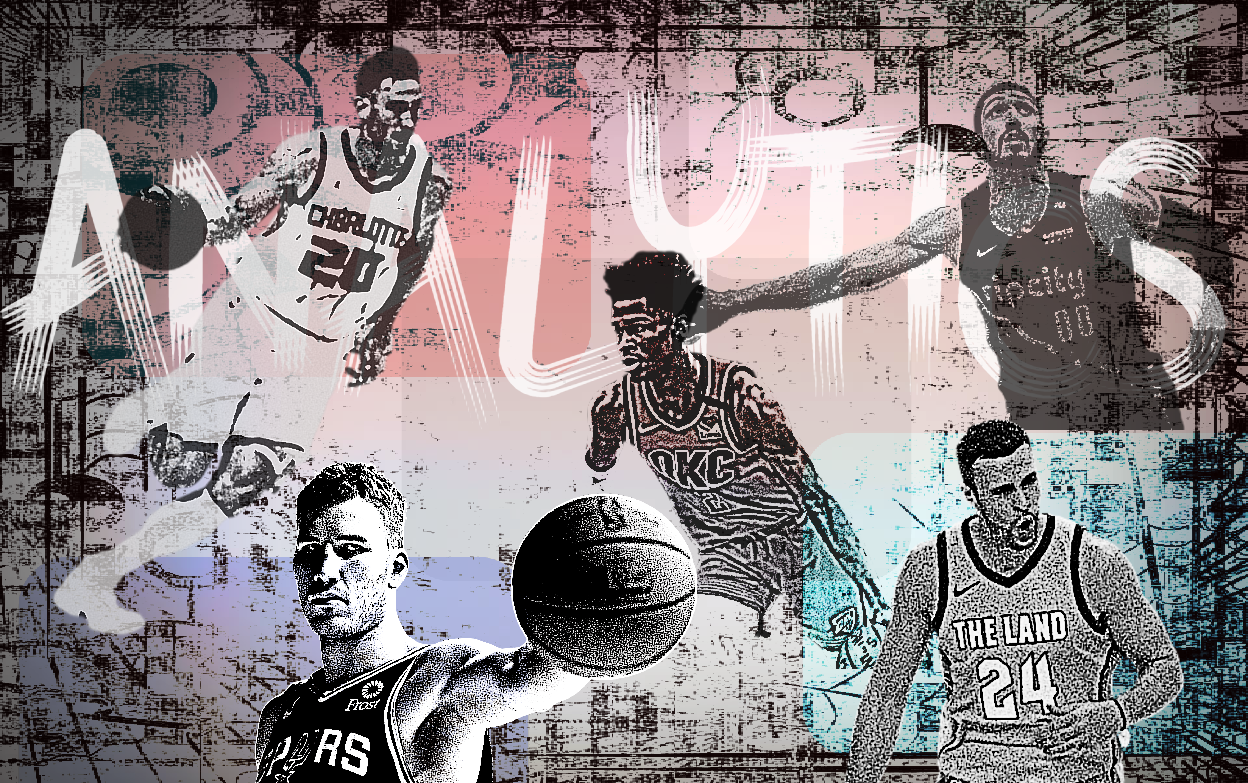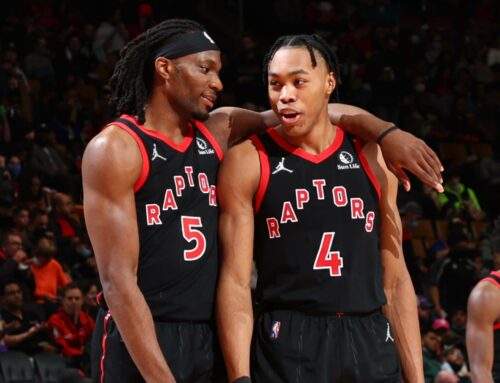Maybe the wonders of analytics feel overblown.
Maybe it’s because Moneyball references get shoved down sports fans’ throats by every General Manager justifying their lackluster free agent offseason.
Or maybe it’s because we can’t bear hearing another NBA announcer talking about it mockingly like some Hedge Fund Manager dismissing Bitcoin.
Or maybe it’s because blogboys (me) talk about it endlessly like it’s some Holy Grail of player analysis ignoring (not me) the intangibles – leadership (Jared Dudley), mentorship (Udonis Haslem), and heart (Playoff Rondo) – that make the game so special and don’t show up in Excel sheets.
Or maybe it’s because…math…
Whatever the reason, I get it. Algorithms aren’t sexy. They aren’t obvious. They feel esoteric and exclusive. And they make you feel like you’ll never win unless you grasp what the Hell Regularized Adjusted Plus Minus is or how Player Efficiency Ratings are calculated.
Ok? Breath. I hear you. I get it.
But. Using Analytics is also like taking the red pill. It opens your eyes to a whole new world of understanding.
It, ironically, reinforces what we old timers like to call the “eye test” or “doing the little things” – confirming our instincts and conclusions with evidence. It gives us “roleplayers” greater recognition. And, most importantly, it unearths those hidden gems buried deep beneath the heft of basic statistics – disposing the dreck of inefficient shooters and defensive sieves.
The following five guys won’t be found much on any major statistical leaderboard. You’ll (I did) have to dig a little bit deeper to find their true value.
Hardcore fans eyeing them intently each game will know what I’m talking about, but, for the rest of us, it takes the nuance of analytical statistics to see how they help their team win.
*Note: Players had to have participated in a minimum of 15 games and 15 minutes per game.
Shea Gilgeous-Alexander – Driver Extraordinaire
Oh, ya, starting off with one of the best rising stars in the NBA is a good way to prove my analytics point (read facetious tone).
I couldn’t help it. He kept lurking about my data dives; his name creeping up in different categories. And, really, when you think about it, SGA is never talked about in the same light as fellow young, hotshot guards Trae Young, Luka Dončić, and Jamal Murray. And he should be.
SGA is, basically, keeping a rebuilding Oklahoma City Thunder team that is running a casting call for the reality TV Show Who wants to be an NBA player? afloat singlehandedly (they’re 10-13 as of writing this).
SGA’s speciality is driving in isolation. He leads the league in isolation frequency and drives for high usage players.
Which is not so surprising. However, what distinguishes SGA from just any old dude who can get his on a crud team is his effectiveness scoring and distributing the basketball while driving.
Of players with fifteen drives or more a game, only Luka and De’Aaron Fox (who was recently named Western Conference Player of the Month) are ahead of him in field goal percentage. He is virtually tied for first with Luka Dončić on points off drives and only DeMar DeRozan is ahead of him in pass percentage (SGA passes on half of all his drives!). He does all this while playing the least amount of minutes.
True, he is much lower than others in assists and secondary assists, but he is seventh in potential assists – so, blame his cast.
SGA is also scoring when it matters. In clutch situations (the last five minutes of a basketball game when there is a differential of five points or less) SGA leads the league in usage and free throw attempts, is fifth in points, and sixth in assists. Measuring him up against other high usage clutch leaders, he has a similar net rating as Jayson Tatum and James Harden.
All that to say, SGA is making the best of his opportunities. He has much to work on – like his jump shot and ability to finish at the rim with contact – but analytics are showing the League that he’s the kind of player a tanking franchise can build around.
Jakob Pöltl – Inconvenient Sleuth
When you hear Jakob Pöltl’s name, you don’t think too much about it . He’s not explosive, he doesn’t post up, and he, literally, does not shoot outside the paint.
His statistics leave you wondering. In twenty-one minutes a game, he averages half a steal a game, 1.5 blocks, and four defensive rebounds. He’s a plug and play big, nothing more.
Or so you’d say at first glance.
Spoon past the first layer of the data trifle and you’ll find something a bit more delicious: Pöltl is a defensive chocolate sauce. He ranks fifth in the league in defensive rating and leads the league in defensive field goal percentage at less than six feet and less than ten feet.
Jakob’s defence comes from his basketball intelligence. Under the tutelage of the great Gregg Popovich, Pöltl has discovered how to leverage spatial awareness, positioning, and his big, ol’ body to disrupt offensive actions. Below, you see how he utilizes his wide frame to both plug the penetrating D’Angelo Russel on the pick and roll and readying himself to easily slide back and return to sender.
In these two clips, you can see Pöltl patiently retreat to the hoop angling his body to mollify both the ballhandler’s attack and the roller’s threat. The latter clip has Pöltl fudging up the back screen, the ball handler, and the roller all in one go.
While Pöltl may not draw the eye like a Rudy Gobert or Myles Turner, he has become a fearsome defensive anchor for the young and up-and-coming San Antonio Spurs.
Gordon Hayward – Running Man
Gordon Hayward is having a redemption year. Mannnn does Danny Ainge wish Gordo was playing like this the last couple seasons in Bahstin.
While it’s lovely just seeing him play again, his endurance is what popped in the numbers. He is tenth in the league in minutes and, wait for it, first, that’s right, a thirty-year old with a litany of past injuries, is first in distance ran per game.
Hayward travels a distance of 14,799 feet every game. Multiply that by the twenty-four games he has played thus far and we have a grand total of 108 kilometres. Behind him in minutes is a league of much younger, spry gentlemen.
He’s not running purposelessly either. While Hayward’s busy competing for an Ironman, or whatever he’s doing on the court that whole time, he’s also sniffing at the 50/40/90 club.
Enes Kanter – Boxout Lord
Enes Kanter’s reputation around the league is polarizing. He’s known famously for his reliable hands and offensive prowess anywhere in the paint; he’s equally renown for his leaden feet and defensive liabilities everywhere outside the paint. He presents as a conundrum to many a coach.
His is game may be diametrically opposed, but there is no arguing about his rebounding capabilities at both ends. He’s fifth in the league in both offensive rebounds and contested rebounds. Though, 6 foot 10 inches, Kanter’s rebounding comes not from his height, but from his boxing out.
He’s fourth in the league in box outs and first in the league in offensive box outs while playing only twenty-four minutes a game. He also leads the league in rebounds off of box outs and in offensive box out percentage (at 40%) – meaning, he’s created a Fight Club [of which you cannot speak of] under both baskets. And it shows, 40% of Kanter’s eleven points per games comes off second chances.
Anointing oneself as offensive boxout lord – Steven Adams puts in a good showing – is strategic. Kanter is undersized against opposing centres. Defensive rebounders rely on most offensive players considering rebounding only until after a shot has gone up. By initiating the box out first, Kanter is taking a page out of Sun Tzu’s Art of War
Appear at points which the enemy must hasten to defend; march swiftly to places where you are not expected
Once established, good luck moving that 250 lbs of Turkish mass from where it’s not expected.
WARNING: SENSITIVE CONTENT Just in case you didn’t know this, Joel Embiid is 7-feet, 280 lbs. I’m not sure Kanter knows…or cares. Shot goes up and, boom, there goes Embiid.
And then there goes D12…
Larry Nance – Court Thief
Playing defence and hustling are mutually exclusive. The former begets the latter, but just because you work hard does not mean you will be a good defender.
For Larry Nance, the two have culminated. Coming out of the draft several analysts compared him to Lou Amundson – which is an incredibly accurate analogy. I mean, Larry’s better – Lou’s spent the past several seasons in the Philippines and Japan – and he has a better scoring touch and ability to create, but over the last couple of years Larry struggled to be more than a freak dunker and rebounder. And at 6 foot 10 inches, 210 lbs, he was starting to reflect the cursed title of “tweener”.
This year, Nance has utilized that long, compact frame to become a switchy-defensive wraith. He seems to be everywhere at once combining his anticipation and athleticism in a precisely chaotic way. Not only is he tied for first in deflections (with Ben Simmons) and tied for fourth in loose balls recovered (with guys like John Wall and Marcus Smart), but he’s also second in the league in steal percentage (which means that 3% of the time Nance is on the floor he ends up with a steal) and eighth in defensive box plus/minus among the more well-known defensive bigs Bam Adebayo and Draymond Green.
Cleveland feels Nance’s presence too. The Cavaliers allow seven points more per 100 possessions when he’s off the court.
I kept looking for a distinct play to exemplify Nance’s defensive acumen and then realized they’re all part and parcel of his impact. Name the action and he’s there to disrupt it.
Analytics reveal many an interesting fact. You never know who you’re going to find in the depths of data. What it tells you, as a player, is that – as I always say – there are endless ways in which you can contribute to a winning team. Some dudes use their intellect. Some guys their shifty playmaking. Others their butts.
But whatever it is, the All-Interesting-Analytic Team, shows you it can be done.





